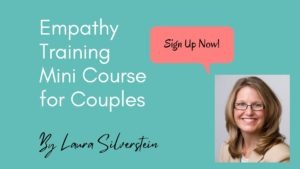It Really is Worth 7 Minutes of Your Day
Do this progressive muscle relaxation exercise lying down if you are trying to fall asleep or relax. If you are trying to increase focus and energy, do it sitting.
Your muscles tighten when you experience stress, acute physical pain, chronic discomfort, and worry. Most of us don’t even notice when we are holding our breath, clenching our jaw, or tensing our muscles. This progressive muscle relaxation exercise will help you increase your awareness of the ways your body is experiencing tension.
Your body automatically go into self-protection, fight:flight mode when it perceives danger. If you were being chased by a tiger it is a very good thing that your heart automatically begins to pump blood more quickly and your muscles tighten, getting ready to run as fast as you can.
When you are not in danger, however, this fight:flight response is not functional and can have a long-term impact on your health if you don’t learn how to ease muscle tension (especially the kind caused by anxiety)
Developed by Dr. Edmund Jacobson more than 50 years ago, Progressive Muscle Relaxation has been found effective in controlling a variety of medical conditions such as high blood pressure and ulcerative colitis. Doctors recommend progressive muscle relaxation in combination with standard therapies for symptom relief in a number of conditions, including headaches, cancer pain, and digestive disturbances. It is a process of tensing and relaxing the muscles in your body, starting with your toes and working up to your head and face.
Short-term Benefits of Progressive Muscle Relaxation
At the end of this 7 minute exercise you can expect to feel a little bit calmer, more focused and relaxed. Many people find it helps with sleeping more soundly and getting your mind off something that is troubling you.
Long-term Benefits of Progressive Muscle Relaxation
If done regularly, progressive muscle relaxation has been found effective in decreasing generalized anxiety, anticipatory anxiety (worry), and panic attacks when done in conjunction with Cognitive Behavior Therapy. People show improved ability to face specific fears, increased concentration and an improved ability to control mood swings.
Audio File
Special thanks to actress Jennie Grace Gonglewski for her performance and Medicine Man Studios for recording. All images courtesy of Dreamstime Free.
Progressive Muscle Relaxation Script
Use this progressive muscle relaxation script to read out loud for a loved one, or record it for ongoing use.
Here is the script of the exercise above. Use a slow calm voice to read this to someone who would like your help becoming calmer. Rest for 5 seconds at the end of each paragraph:
To get started, find a very comfortable relaxed position. You may want to close your eyes, or feel free to keep them open if you’re more comfortable that way.
Let’s begin by focusing on your breathing, following your breath as it comes into your body and goes out of your body. Take 3 slow, full natural breaths in and out, noticing how your energy rises on the in-breath and falls on the out breath. Slow even breaths can help our bodies begin to relax as we start to notice the difference between tension and relaxation.
Now, focus on your feet, continuing to breathe evenly and naturally. Tighten the muscles in your feet by clenching your toes and pulling the tops of your feet up towards your shins. Hold the tension, continue to hold… then release and relax, noticing the difference between tension and calm relaxation.
Next, focus on your lower legs. Tighten those muscles in your calves… tight and tense… hold… then release and relax, allowing the tension to drain away and melt into the ground. Notice the experience of peaceful relaxation in your calves. Continue to breathe naturally and easily as you pay attention to the relaxation in your calves.
Shift your awareness now to your upper legs. Tense and tighten the muscles in your thighs, hold them tight, tensing… then release and relax, letting any tightness, discomfort or stress flow away while continuing to notice the difference between tension and tranquility. Stay with that experience while continuing to breathe easily and calmly.
Now let’s move your awareness to your stomach and back. Tighten those muscles by pulling your belly button as far as you can towards your back, tight and tense. Hold… tight… then release and relax, making plenty of space in your abdomen for your breath, noticing how it feels to allow your muscles to be still.
Gently shift your attention to your hands. Tighten your fingers into tight, tense fists… squeezing as tight as you can…then release and relax, letting any tension or discomfort flow out through your fingertips. Take time for the experience as the tension melts away, replaced by a feeling of calm, peaceful relaxation.
Next focus on your arms. Tighten all of those muscle, pulling your arms in as tight as you can into your body… tight and tense… and hold… then release and relax, allowing your arms to settle, noticing the difference between stress and stillness. Take the time to breathe into this experience.
Now move on to your shoulders and neck. Go ahead and lift your shoulders up and in, really pulling them into your neck, and hold tight, tensing them… Then release and relax, letting your shoulders fall gently down and back, letting go of any stress and allowing the muscles in your neck and shoulders to be free from tension.
Now gently focus your attention on all the tiny little muscles of your face. Tighten those muscles by tightly shutting your eyes, clenching your jaw and stretching your lips up and back. … maintain the tension… then release and relax, letting your muscles be settled and comfortable, paying attention to the difference between the tightness of tension and the comfort of relaxation.
And now, imagine looking over your whole body to see if there are any remaining areas of tension or discomfort. Gently breathe into those areas, imagining oxygen is going directly to any areas of tension.
Enjoy for a few more moments the comfort and relaxation you feel … knowing that you can return here at any time. Allow your body to continue to feel comfortable and relaxed, even as your attention turns elsewhere. When we are relaxed we are more focused, experience less pain and are more able to be connected to what we are doing.
When you are ready, take one more full breath and gently bring your attention to the world around you. Wiggle your fingers and your toes.
You are ready to continue your day!
Now that You are Calm – Go Talk to Someone You Trust
If you were in an upsetting conversation with someone and needed a break, it’s time to go back and have a repair. If you’re upset about something, and you need a shoulder to lean on, it’s okay to ask for help.
 Here is a Free Mini Empathy Training Audio Course by Certified Couples Therapist Laura Silverstein, LCSW. This course will help you speak about your stress in a way that you are likely to feel understood and connected.
Here is a Free Mini Empathy Training Audio Course by Certified Couples Therapist Laura Silverstein, LCSW. This course will help you speak about your stress in a way that you are likely to feel understood and connected.

